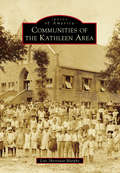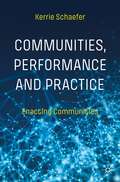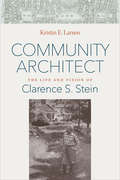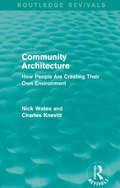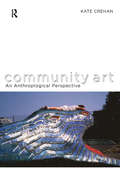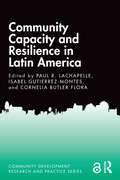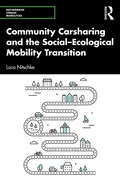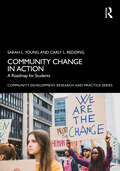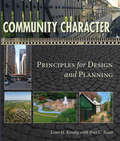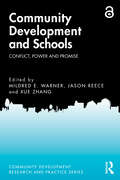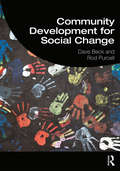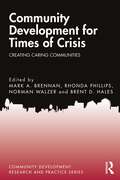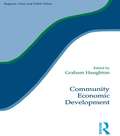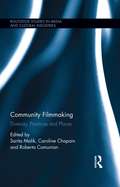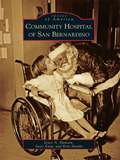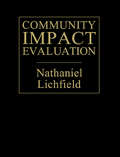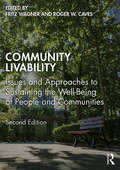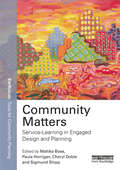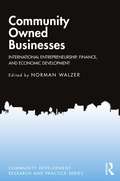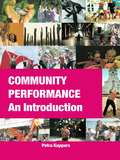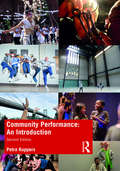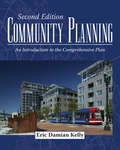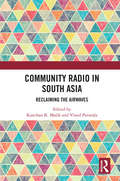- Table View
- List View
Communities of the Kathleen Area
by Lois Sherrouse-MurphySettlers from Georgia and the Carolinas began arriving in the communities of the Kathleen area in the 1840s, well before the establishment of Polk County, Florida, in 1861. In the summer of 1851, circuit-riding preacher Rev. J.M. Hayman offered his first sermon at Br. William T. Rushing's homestead at Indian Pond in Socrum, a site soon to become home to Bethel Baptist Church. Against the backdrop of the Seminole Indian Wars, the Civil War, public land incentive programs, and the coming of the railroads in the 1880s, the seven other northwest Polk County communities of the Kathleen area (Galloway, Gibsonia, Green Pond, Griffin, Kathleen, Providence, and Winston) soon followed and were well established by 1900. Self-sufficient and resilient pioneers set up homesteads, nurtured large families, built churches and schools, served in positions of leadership, and created an agricultural-based economy with cattle raising, citrus, timber and logging, and strawberry farming.
Communities, Performance and Practice: Enacting Communities
by Kerrie SchaeferThis book examines how a predominantly negative view of community has presented a challenge to critical analysis of community performance practice. The concept of community as a form of class-based solidarity has been hollowed out by postmodernism’s questioning of grand narratives and poststructuralism’s celebration of difference. Alongside the critique of a notion of community has been a critical re-signification of community, following the thinking of philosopher Jean-Luc Nancy who conceives of community not as common being but as being-in-common. The concept of community as being-in-common generates questions that have been taken up by feminist geographers, J.K. Gibson-Graham, in theorising a post-capitalist approach to community-based development. These questions and approaches guide the analyses in researched case studies of community performance practice. The book revises theoretical debates that have defined the field of community theatre and performance. It asks how the critical re-signification of community aligns with these debates and, at the same time, opens new modes of critical analysis of community theatre and performance practice.
Community Architect: The Life and Vision of Clarence S. Stein
by Kristin E. LarsenClarence S. Stein (1882–1975) was an architect, housing visionary, regionalist, policymaker, and colleague of some of the most influential public figures of the early to mid-twentieth century, including Lewis Mumford and Benton MacKaye. Kristin E. Larsen's biography of Stein comprehensively examines his built and unbuilt projects and his intellectual legacy as a proponent of the "garden city" for a modern age. This examination of Stein’s life and legacy focuses on four critical themes: his collaborative ethic in envisioning policy, design, and development solutions; promotion and implementation of “investment housing;” his revolutionary approach to community design, as epitomized in the Radburn Idea; and his advocacy of communitarian regionalism. His cutting-edge projects such as Sunnyside Gardens in New York City; Baldwin Hills Village in Los Angeles; and Radburn, New Jersey, his “town for the motor age,” continue to inspire community designers and planners in the United States and around the world.Stein was among the first architects to integrate new design solutions and support facilities into large-scale projects intended primarily to house working-class people, and he was a cofounder of the Regional Planning Association of America. As a planner, designer, and, at times, financier of new housing developments, Stein wrestled with the challenges of creating what today we would term “livable,” “walkable,” and “green” communities during the ascendency of the automobile. He managed these challenges by partnering private capital with government funding, as well as by collaborating with colleagues in planning, architecture, real estate, and politics.
Community Architecture: How People Are Creating Their Own Environment (Routledge Revivals)
by Nick Wates Charles KnevittFirst published in 1987, this title was one of the first to explore the emerging popular movement of Community Architecture, championed by Prince Charles, which gained momentum throughout Britain in the 1970s and 1980s. The conceptual framework rests fundamentally on the principle that the built environment is most effective when those who live in a particular area are actively engaged with its creation and daily administration. A work that has influenced policy makers and planning legislation, Community Architecture remains one of the key reference works for student architects and planners.
Community Art: An Anthropological Perspective
by Kate CrehanExploring key issues for the anthropology of art and art theory, this fascinating text provides the first in-depth study of community art from an anthropological perspective.The book focuses on the forty year history of Free Form Arts Trust, an arts group that played a major part in the 1970s struggle to carve out a space for community arts in Britain. Turning their back on the world of gallery art, the fine-artist founders of Free Form were determined to use their visual expertise to connect, through collaborative art projects, with the working-class people excluded by the established art world. In seeking to give the residents of poor communities a greater role in shaping their built environment, the artists' aesthetic practice would be transformed.Community Art examines this process of aesthetic transformation and its rejection of the individualized practice of the gallery artist. The Free Form story calls into question common understandings of the categories of "art," "expertise," and "community," and makes this story relevant beyond late twentieth-century and early twenty-first-century Britain.
Community Capacity and Resilience in Latin America (Community Development Research and Practice Series)
by Cornelia Butler Flora Paul R. Lachapelle Isabel Gutierrez-MontesCommunity Capacity and Resilience in Latin America addresses the role of communities in building their capacity to increase resiliency and carry out rural development strategies in Latin America. Resiliency in a community sense is associated with an ability to address stress and respond to shock while obtaining participatory engagement in community assessment, planning and outcome. Although the political contexts for community development have changed dramatically in a number of Latin American countries in recent years, there are growing opportunities and examples of communities working together to address common problems and improve collective quality of life. This book links scholarship that highlights community development praxis using new frameworks to understand the potential for community capacity and resiliency. By rejecting old linear models of development, based on technology transfer and diffusion of technology, many communities in Latin America have built capacity of their capital assets to become more resilient and adapt positively to change. This book is an essential resource for academics and practitioners of rural development, demonstrating that there is much we can learn from the skills of self-diagnosis and building on existing assets to enhance community capitals. Chapter 3 of this book is freely available as a downloadable Open Access PDF at http://www.taylorfrancis.com under a Creative Commons Attribution (CC-BY) 4.0 license.
Community Carsharing and the Social–Ecological Mobility Transition (Networked Urban Mobilities Series)
by Luca NitschkeThis book investigates how practices of community carsharing are influencing everyday mobility. It argues that hegemonic practices of automobility are reconfigured through practices of community carsharing, thereby challenging capitalist mobilities in the realm of everyday life. Through a detailed empirical study of practices of community carsharing and its practitioners in the rural regions around Munich, Germany, this book reveals how the practice contributes to the emergence of alternative automobile practices, meanings, identities and subjectivities. It also explores the embedding of automobility into its ecological context, the connection of function and community in practices of community carsharing and the changing of ownership relations through a process of commoning mobility. This reconfiguration of everyday practices of automobility takes place through processes of everyday resistance, re-embedding and commoning, and ultimately results in the emergence of an alternative mobility culture, thereby facilitating the dissemination of an alternative common sense of community carsharing. This book on community carsharing provides a valuable insight into carsharing in rural settings and exemplifies how carsharing specifically, and sharing mobilities in general, can contribute to a social–ecological mobility transition. The work will be of particular interest to scholars and practitioners working in mobility studies and mobilities.
Community Change in Action: A Roadmap for Students (Community Development Research and Practice Series)
by Sarah L. Young Carly L. ReddingCommunity Change in Action guides students through the process of turning their personal passion into goal-driven action for community development. Using an evidence-based curriculum, the book breaks down exactly how to initiate and drive social change in a way that speaks to the unique characteristics of Generation Z (Gen Z).Each chapter provides step-by-step actions, analyzes real-life examples, and supplies the necessary tools for success. The authors' multiple decades of experience leading students in community development, both in the United States and abroad, spawn a rich and engaging source for these examples. Each step is highlighted through Gen Z's narrated examples of using the guide and the associated toolkits to implement major social change initiatives, from Native American reservations to the slums of India and beyond.This book takes best practice approaches to youth leadership, community development, and social change beyond the classroom, inspiring and illustrating how Gen Z students can take their passion and turn it into social action.
Community Character: Principles for Design and Planning
by Lane H. Kendig Bret C. KeastCommunity Character provides a design-oriented system for planning and zoning communities but accounts for how people who participate in a community live, work, and shop there. The relationships that Lane Kendig defines here reflect the complexity of the interaction of the built environment with its social and economic uses, taking into account the diverse desires of municipalities and citizens. Among the many classifications for a community's "character" are its relationship to other communities, its size and the resulting social and economic characteristics. According to Kendig, most comprehensive plans and zoning regulations are based entirely on density and land use, neither of which effectively or consistently measures character or quality of development. As Kendig shows, there is a wide range of measures that define character and these vary with the type of character a community desires to create. Taking a much more comprehensive view, this book offers "community character" as a real-world framework for planning for communities of all kinds and sizes. A companion book, A Practical Guide to Planning with Community Character, provides a detailed explanation of applying community character in a comprehensive plan, with chapters on designing urban, sub-urban, and rural character types, using character in comprehensive plans, and strategies for addressing characteristic challenges of planning and zoning in the 21st century.
Community Custodians of Popular Music's Past: A DIY Approach to Heritage (Routledge Research in Music)
by Sarah BakerThis book examines do-it-yourself (DIY) approaches to the collection, preservation, and display of popular music heritage being undertaken by volunteers in community archives, museums and halls of fame globally. DIY institutions of popular music heritage are much more than ‘unofficial’ versions of ‘official’ institutions; rather, they invoke a complex network of affect and sociality, and are sites where interested people – often enthusiasts – are able to assemble around shared goals related to the preservation of and ownership over the material histories of popular music culture. Drawing on interviews and observations with founders, volunteers and heritage workers in 23 DIY institutions in Australasia, Europe and North America, the book highlights the potentialities of bottom-up, community-based interventions into the archiving and preservation of popular music’s material history. It reveals the kinds of collections being housed in these archives, how they are managed and maintained, and explores their relationship to mainstream heritage institutions. The study also considers the cultural labor of volunteers in the DIY institution, arguing that while these are places concerned with heritage management and the preservation of artefacts, they are also extensions of musical communities in the present in which activities around popular music preservation have personal, cultural, community and heritage benefits. By looking at volunteers’ everyday interventions in the archiving and curating of popular music’s material past, the book highlights how DIY institutions build upon national heritage strategies at the community level and have the capacity to contribute to the democratization of popular music heritage. This book will have a broad appeal to a range of scholars in the fields of popular music studies, musicology, ethnomusicology, archive studies and archival science, museum studies, critical heritage studies, cultural studies, cultural sociology and media studies.
Community Development and Schools: Conflict, Power and Promise (ISSN)
by Mildred E. Warner Xue Zhang Jason ReeceThis book lays out the promise and potential of schools as community-building institutions. It explores the challenges faced in incorporating schools into broader community development policy, and also recognizes the changing demographics of schools and their need to integrate with economic development policy in order to promote broader community development.The book includes chapters on tax abatements and economic development policy impacts on schools, new approaches to school building renovation, the potential and reach of shared services between communities and schools, and the impact of school-based health centers. It also offers a theory to integrate schools into community development. Key elements include shared power between communities and schools, greater transparency in economic development policy, collaboration across the broad range of community actors, and engagement of diverse voices. These elements build a greater sense of belonging across generations and class and racial divides.Creative democracy can broaden both school and community development agendas and build a culture of health. This book will help community development and school leaders recognize and pursue the promise of schools as critical community development actors.The Open Access version of this book, available at http://www.taylorfrancis.com, has been made available under a Creative Commons Attribution-Non Commercial (CC-BY-NC) 4.0 license.
Community Development for Social Change
by Dave Beck Rod PurcellCommunity Development for Social Change provides a comprehensive introduction to the theory and practice of community development and associated activities, discusses best practice from global experience and links that to the UK context. The book integrates the realities of practice to key underpinning theories, human rights, values and a commitment to promoting social justice. A range of practice models are described and analysed, including UK models, popular education and community organising, as well as a range of practice issues that need to be understood by community development workers. For example, strategies to promote individual and community empowerment, challenging discrimination, building and sustaining groups, and critical reflection on practice. Finally, a range of case studies from the UK and overseas illustrates good practice in diverse contexts. These case studies are analysed with reference to the values of community development, the promotion of social justice and the underpinning theories. It is an essential text for those on community development courses as well as for a range of workers, including local government, national and local voluntary agencies, and community-based organisations.
Community Development for Times of Crisis: Creating Caring Communities (Community Development Research and Practice Series)
by Mark A. BrennanThis book explores the intersection of community development and local capacity building as a basis for effective disaster mitigation and the alleviation of suffering in times of crisis. Beginning with the Community Development section, the process, context, and methods for community, engagement, and development can be viewed from different structural and logical approaches. This section explores some of the more relevant historical arguments, as well as more contemporary examinations. The second section looks at Critical Human and Community Considerations and sheds light on some of the key concepts that are often overlooked (poverty, race, inequality, social justice, mental health, social division) when framing community responses to disaster. The third section focuses on Fundamental Elements of Caring Communities. This section explores the importance, practical, and measurable impacts of social support, empathy, inclusion, and conflict resolution in creating effective and caring community responses. Finally, the last section focuses on practice and brings together research and theory into applied programming, examples, and evidence from on-the-ground efforts to establish caring communities that respond to local needs in times of crisis and beyond. By addressing these objectives, this book provides a more complete understanding of the essential role that community can play in disaster mitigation. Doing this will provide a better focus for ongoing research endeavors, and program and policy initiatives at the community level that seek to prepare for, respond to, and recover from natural and other disasters. As a result, this book contributes to wider and more sustainable development of our communities beyond disasters, while furthering dialog among community scholars and practitioners.
Community Economic Development (Regions and Cities #Vol. 22)
by Graham HaughtonThis important book examines the ways in which community economic development can contribute to local and regional regeneration. It presents a unique overview of the state of contemporary British practice in this important policy area and provides a series of fresh, theoretical, methodological and empirical insights which help us to understand ways in which communities are facing up to the challenges of devising and bringing about their own revitalisation. Community Economic Development is underpinned by the argument that much conventional regeneration work represents at best a short-term fix rather than a long-term sustainable solution to the problems of socially excluded communities. The emphasis of the book is largely on the British experience with contributions from a rich mix of new and established academics and practitioners.
Community Filmmaking: Diversity, Practices and Places (Routledge Studies in Media and Cultural Industries)
by Sarita Malik Caroline Chapain Roberta ComunianThis book examines the role of community filmmaking in society and its connection with issues of cultural diversity, innovation, policy and practice in various places. Deploying a range of examples from Europe, North America, Australia and Hong Kong, the chapters show that film emerging from outside the mainstream film industries and within community contexts can lead to innovation in terms of both content and processes and a better representation of the cultural diversity of a range of communities and places. The book aims to situate the community filmmaker as the central node in the complex network of relationships between diverse communities, funding bodies, policy and the film industries.
Community Green: Rediscovering the Enclosed Spaces of the Garden Suburb Tradition
by David Nichols Robert FreestoneNeighbourhood open space ranks highly as a key component in suburban liveability assessments, originating from the development of urban planning as a profession and the proliferation of the garden suburb. Community Green uniquely connects the past, present and future of planning for small open spaces around the narrative of internal reserves.The distinctive planned spaces are typically enclosed on every side, hidden within residential blocks, serving as local pocket parks and reflecting the evolving values of community life from the garden city movement to contemporary new urbanism. This book resuscitates the enclosed, almost secretive reserve from history as a distinctive form of local open space whose problems and potentialities are relevant to many other green community spaces. In so doing, it opens up even wider connections between localism and globalism, the past and the future, and for connecting community initiatives to broader global challenges of cohesion, health, food, and climate change. This fully illustrated book charts the outcomes and implications of this evolution across several continents, injecting human stories of civic initiatives, struggles and triumphs along the way.Community Green will be of interest to a wide readership interested in studying, managing and improving the quality of all small open spaces in the urban landscape.
Community Hospital of San Bernardino
by Joyce A. Hanson Erin Shanks Suzie EarpDr. William Henry Mills, fellow in the Royal College of Surgeons and the Royal College of Physicians in London, arrived in San Bernardino, California in February 1903. Recruited by Dr. George Rowell as a medical partner, Dr. Mills quickly realized that surgical facilities in San Bernardino were woefully inadequate. Determined to improve medical care, in 1906 Mills converted an old wooden residence at the corner of Fourth and F Streets into the Marlborough Hospital. In 1909, with the need for additional space acute, Dr. Mills approached his friend, attorney Ralph Swing, for funding to purchase land at the site of an old adobe saloon located at the corner of Fourth Street and Arrowhead Avenue. In March of 1909, Swing and Mills purchased the land and began construction of a two-story stucco hospital building with beds for 42 patients and a modern operating room. Ramona Hospital, later renamed Community Hospital, opened its doors in February 1910 and has operated continuously, providing state-of-the-art medical care for area residents.
Community Impact Evaluation: Principles And Practice
by Nathaniel LichfieldThis is a work summarizing in one volume the pioneering approach of the author to public-interest decision-taking in the field of urban & regional planning. This book is aimed at students, researchers and professionals in planning. Nathaniel Lichfield first introduced in his "Economics of Planned Development" the concept that, in any use and development of land, the traditional "development balance sheet" of the developers needed to be accompanied by a "planning balance sheet" prepared by the planning officer or planning authority. Over the forty years since this work was published, the author has brought to the operational level the "planning balance sheet", with many case studies, primarily for consultancy purposes. The present title reflects the incorporation during the 1970s of the then emerging field of environmental impact assessment.
Community Livability: Issues and Approaches to Sustaining the Well-Being of People and Communities
by Fritz Wagner Roger W. CavesWhat is a livable community? How do you design and develop one? What does government at all levels need to do to support and nurture the cause of livable communities? Using a blend of theory and practice, the second edition of Community Livability addresses evidence from international, state and local perspectives to explore what is meant by the term "livable communities." The second edition contains new chapters from leading academics and practitioners that examine the various factors that constitute a livable community (e.g., the influence and importance of transportation options/alternatives to the elderly, the importance of walkability as a factor in developing a livable and healthy community, the importance of good open space providing for human activity and health, restorative benefits, etc., the importance of coordinated land use and transportation planning), and the relationship between livability and quality of life. A number of chapters focus on livable communities with case studies from an international perspective in USA, Canada, Australia, Peru, Sweden, South Korea, Japan, and Austria.
Community Matters: Service-learning In Engaged Design And Planning (Earthscan Tools for Community Planning)
by Mallika Bose Paula Horrigan Cheryl Doble Sigmund C. ShippWinner of the EDRA 2015 Book Award! Community Matters: Service Learning in Engaged Design and Planning explores issues that resonate with a diverse group of design and planning educators drawn to the challenge of supporting greater community building and empowerment while combining learning with practice. The book explores such questions as: How do we foster mutuality and reciprocity in community-academy partnerships? What conflicts, challenges, limits and obstacles do we face in our service-learning studios and projects? What evidence do we have of our impacts on students and communities and how are we responding? How are we being attentive to the contemporary environmental and societal issues? What is our role as both designers and agents of societal change? How are we innovating to enable greater capacities for individuals, future practitioners and communities? This book provides compelling evidence that educators should be adopting engaged pedagogies, research methods and theories through which they can bring together education, practice and scholarship at the boundary of community and academy.
Community Owned Businesses: International Entrepreneurship, Finance, and Economic Development (Community Development Research and Practice Series)
by Norman WalzerThis book analyses community-owned businesses in countries around the world to show successful approaches and important strategies to improve access to essential services in vastly different economic contexts. Through eleven chapters, authors from various countries use case studies and analyse findings in ways which can be applied to new development initiatives, including rural grocery store retention in Kansas, socially responsible community cooperatives in Italy, preserving pubs and shops in England and Wales, serving residents with special needs in Canada, and financing basic goods and services for aging populations in Taiwan, plus other examples. The chapters explore practices and approaches used in various locations to address concerns about loss of access to essential services, making clear that this approach to financing is useful in different scenarios. The chapters provide key insights suggesting that these approaches will be even more prevalent in the future and will be of interest to students, scholars, and community-development practitioners around the world.
Community Performance: An Introduction
by Petra KuppersCommunity Performance: An Introduction is a comprehensive and accessible practice-based primer for students and practitioners of community arts, dance and theatre. It is both a classroom-friendly textbook and a handbook for the practitioner, perfectly answering the needs of a field where teaching is orientated around practice. Offering a toolkit for students interested in running community arts groups, this book includes: international case-studies and first person stories by practitioners and participants sample exercises, both practical and reflective study questions excerpts of illustrative material from theorists and practitioners. This book can be used as a standalone text or together with its companion volume, The Community Performance Reader, to provide an excellent introduction to the field of community arts practice. Petra Kuppers has drawn on her vast personal experience and a wealth of inspiring case studies to create a book that will engage and help to develop the reflective community arts practitioner.
Community Performance: An Introduction
by Petra KuppersCommunity Performance: An Introduction is a comprehensive and accessible practice-based primer for students and practitioners of community arts, dance, and theatre, offering reflection on the ethical issues inherent to the field. It is both a classroom-friendly textbook and a handbook for the practitioner, perfectly answering the needs of a field where teaching is orientated around practice. Offering a toolkit for students interested in running community arts groups or community performance events, this book includes: international case studies and first-person stories by practitioners and participants sample exercises, both practical and reflective study questions excerpts of illustrative material from theorists and practitioners This second edition has been completely revised with over 25% new content to bring the book up to date with developments in both society and performance, including the rise of social media, updates in the contexts of social justice, new standards and norms in social practice, and the changing faces of funding, evaluation, and professional development. The book can be used as a standalone text or together with its companion volume, Community Performance: A Reader, to provide an excellent introduction to the field of community arts practice.
Community Planning: An Introduction to the Comprehensive Plan, Second Edition
by Eric Damian KellyThis book introduces community planning as practiced in the United States, focusing on the comprehensive plan. Sometimes known by other names--especially master plan or general plan--the type of plan described here is the predominant form of general governmental planning in the U.S. Although many government agencies make plans for their own programs or facilities, the comprehensive plan is the only planning document that considers multiple programs and that accounts for activities on all land located within the planning area, including both public and private property. Written by a former president of the American Planning Association, Community Planning is thorough, specific, and timely. It addresses such important contemporary issues as sustainability, walkable communities, the role of urban design in public safety, changes in housing needs for a changing population, and multi-modal transportation planning. Unlike competing books, it addresses all of these topics in the context of the local comprehensive plan. There is a broad audience for this book: planning students, practicing planners, and individual citizens who want to better understand local planning and land use controls. Boxes at the end of each chapter explain how professional planners and individual citizens, respectively, typically engage the issues addressed in the chapter. For all readers, Community Planning provides a pragmatic view of the comprehensive plan, clearly explained by a respected authority.
Community Radio in South Asia: Reclaiming the Airwaves
by Vinod Pavarala Kanchan K. MalikThis book explores the state of community radio, a significant independent media movement that began about two decades ago, in different parts of South Asia. The volume outlines the socioeconomic and historical contexts for understanding the evolution and functioning of community radio in an increasingly globalised media environment. It provides a ring-side view of how various countries in South Asia have formulated policies that enabled the emergence of this third sector of broadcasting (public and private being the other two) through radio, rendering the media ecology in the region more pluralistic and diverse. The chapters in the volume, interspersed by practitioner perspectives, discuss a range of key issues related to community radio: radio policies, NGOisation of community radio, spectrum management and democratisation of technology, disasters/emergencies, gender issues, sustainability, and conflicts. One of the first of its kind, this volume will appeal to scholars and researchers of community media and independent media studies, cultural studies, as well as sociology and social anthropology, and South Asian studies.
